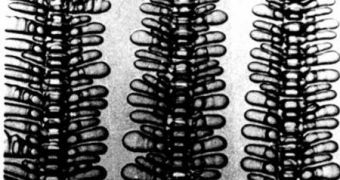US Department of Energy (DOE) Ames Laboratory senior metallurgist Rohit Trivedi now has all the reasons in the world to be filled with joy. His crystal-growth experiment, which he first dreamed of more than a decade ago, is finally aboard the International Space Station (ISS), in a microgravity environment. The DECLIC – DEvice for the study of Critical LIquids and Crystallization – micro-laboratory was delivered aboard the ISS by space shuttle Discovery, during the STS-128 mission.
Trivedi's laboratory, in Wilhelm Hall on the Iowa State University (ISU) campus, in Ames, will be directly linked to the small lab, and the expert will thus be able to control all the parameters of crystal growth he wants, all in real time. The final goal of the destination is to understand how crystals form when materials move from their liquid to their solid state, and also how variations in external conditions influence the crystallization process, if at all. Having already exhausted most possibilities back on Earth, for the past ten years, the expert has wanted to study these effects in microgravity.
“When materials 'freeze' there are specific crystalline growth patterns that appear, and there are fundamental physics that govern these patterns. However, small effects can have significant influence on the patterns that form. Snow flakes, for example, form the same basic six-sided pattern, but because of minute variations, no two are exactly alike. These crystallization patterns play a critical role in governing the properties of a solidified material. On Earth, the small effects are masked by convection. We hope that in a low-gravity environment, convection will be minimized so that we can more clearly see the importance of the small effects and see how the experimental data match our theoretical modeling,” the expert says of his research.
Trivedi is also the ISU distinguished professor of materials science and engineering, and focuses his research mostly on metals. The chemical that flew to the ISS is a substance called succinonitrile, which has the relatively low melting point of about 57 degrees Celsius. Because it is transparent, it will allow researchers to peer inside it with relative ease. DECLIC is not the only Ames Laboratory science in outer space. The Materials Preparation Center at Ames also worked on devices used in instrument-cooling systems aboard the European Space Agency's Planck satellite.

 14 DAY TRIAL //
14 DAY TRIAL //